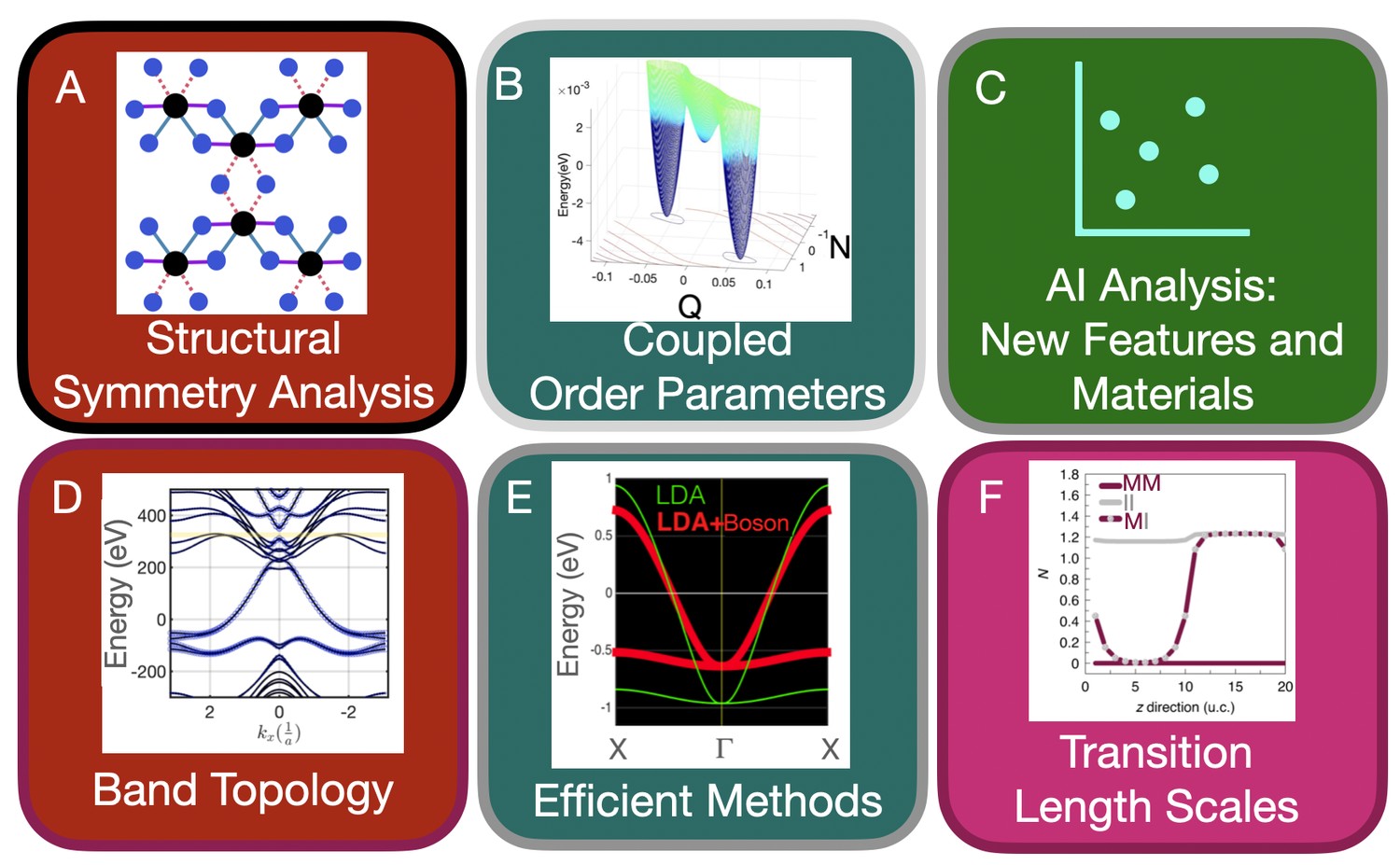We are looking for motivated undergraduate students, graduate students, regardless of previous computational experience, as well as motivated postdocs.
Research Goals

Research Goals
*Interested IU Bloomington Undergraduates Should Contact the PI for Possible Research Opportunities*
Electronically active transition metal compounds are key to existing and novel microelectronics, batteries, photocatalysis, wind power, batteries, medical imaging devices and even possibly high energy particle detectors (including dark matter detectors) due to their different electronic phases and phase transitions, including those related to magnetism, high temperature superconductivity, ferroelectricity, and metal to insulator transitions.
The theoretical and computational study of their electronic properties requires cutting edge techniques to study theoretically, and an interdisciplinary approach.
Our work combines computational tools (density functional theory), chemistry and physics-informed models, materials science (symmetry analysis, structure-property relations), data science (automated, machine learning-assisted materials discovery and understanding), and close collaboration with experiment to discover new materials and understand and control their properties. We are focused on building wide-ranging, predictive models of materials behavior.
Key examples of previous work include the solution of a decades old problem of what drives the transition to an insulating state in Jahn-Teller-like transitions (crystal lattice or valence electron energy? the answer is in our Nature’s Communications Physics here), building the first database and online tools to discover new metal-insulator transition compounds (see our Chem Matter here), clarification of the length scales of phase transitions in correlated materials (see our Nat Mat paper here), clarifying key elements in the phenomenology of 2d transition metal halides, and building highly efficient theoretical methods and numerical tools to treat electronic interactions (Boson Subsidiary Solver here, Generalized slave-particle method for extended Hubbard models here, and Symmetry breaking in occupation number based slave-particle methods here). In a more applied direction, we’ve shown sapphire displays a strong coupling between surface electric dipoles and vibrational modes, a result now used in lasers and superconducting quantum circuits.
We are happy to discuss future research plans in person or via zoom.

